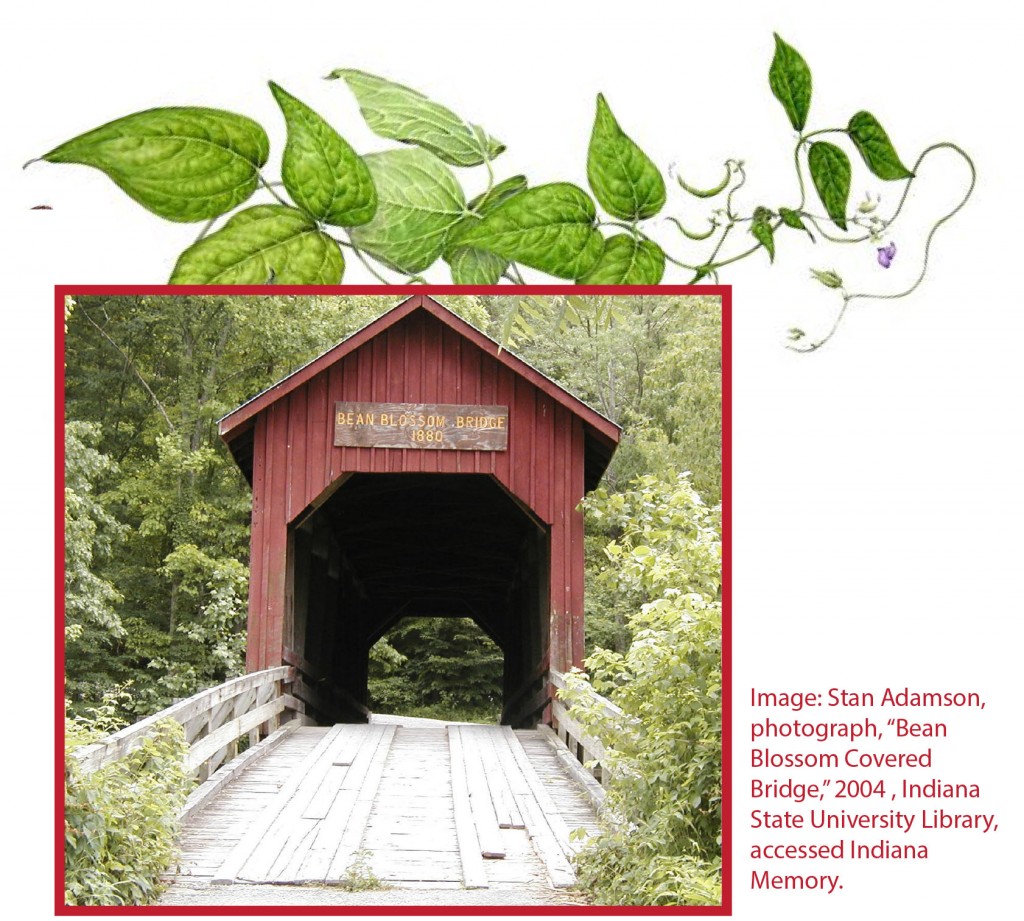
By 1939, the Great Depression had ended and Hoosiers had a little more money in their pockets. More folks had access to automobiles and most had a little bit of free time after church on Sunday afternoons. So rural Hoosiers gathered at each other’s homes, turned on the radio, and listened to variety and comedy shows and country music. Sometimes they got out their own fiddles, rolled back the rugs, and danced, much as they had since the previous century.
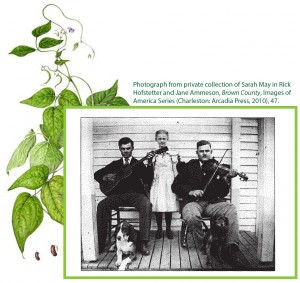
They also gathered at schools and halls for more organized concerts and dances. Despite such diversions, down in the quaintly-named town of Bean Blossom in Brown County, locals reported there was still the feeling that there was nothing to do. According to an August 10, 1941 Indianapolis Star article, Bean Blossom had no movie theater and the town’s only tavern was closed Sunday, so the locals “must provide their own entertainment.”
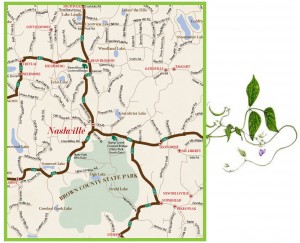
Bean Blossom, originally spelled “Beanblossom,” is located in Brown County just four miles north of Nashville. The history of the descriptive moniker is clouded with folklore. There are at least two different accounts of men with the name of Bean Blossom or Beanblossom who almost drowned in the creek which was then named for them. An alternate explanation is that it is a translation from the Miami name for the creek. Still another tradition holds that the town is named after the wild bean plants that grew along the stream and provided sustenance for early settlers.
In the late 1930s, early 1940s, there still wasn’t much to the little town, but that didn’t mean there wasn’t excitement to be had – especially at the intersection of Indiana Highways 135 and 45, where there was a lunch counter at a filling station owned by Dan Williams. Sometimes musicians gathered there to play country and “hillbilly” music. They played some tunes they grew up with, and some they heard on the radio – country music popularized by the broadcast of the Grand Ole Opry. One day a man was passing through town with a speaker system set up on top of his truck through which he could amplify records. This drew people to the filling station to listen to music and some of the locals got the idea to put on a free show. In 1941, the Brown County Democrat recalled: “The Brown County Jamboree, which it has been commonly named, was not formally planned but just grew out of an evening when a passing truckman with a loudspeaker system proposed that he connect it up and play records which he was allowed to do.”
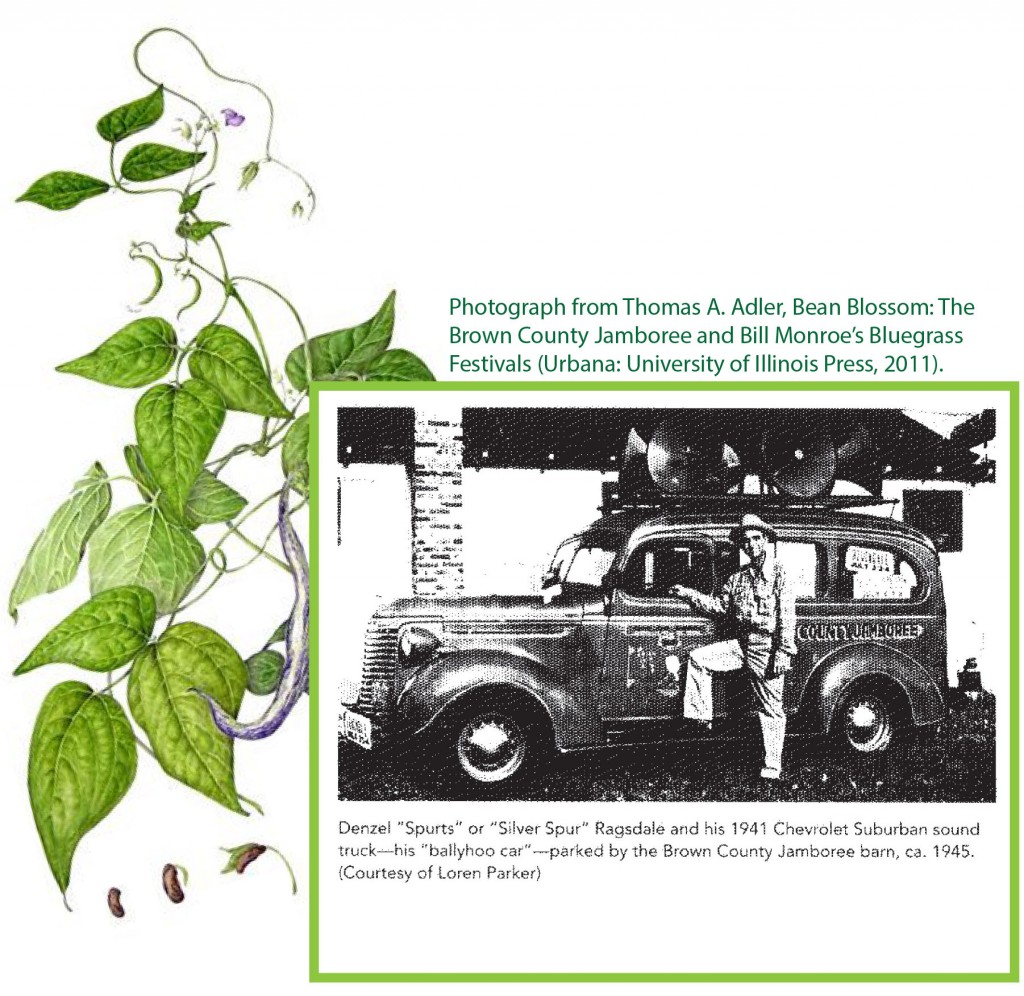
According to recollections gathered by historian Thomas Adler in his thoroughly researched work Bean Blossom: The Brown County Jamboree and Bill Monroe’s Bluegrass Festival, the first show was modest, but successful. There was one microphone set up on a stand and a small amplifier for the musicians who played popular songs both live and on recordings. One of the original founders and performers, Guy Smith, had some experience organizing country band performances and dances. Another, Denzel Ragsdale, also known as “Spurts” or the “Silver Spur” was a performer and took on the role of soundman and promoter. He created a series of “ballyhoo cars” to advertise the free show. Painted with the words “Brown County Jamboree,” the cars had horn speakers on the roof that projected sound from the record player and a microphone located in the car. Jack McDonald, an early Jamboree attendee, recollected the events but not the names in an interview collected by Adler:
Sometime in the early forties when life in the country was a little slow, some men decided that Bean Blossom needed a little country music to lighten things up a bit. One person had an old station wagon with a sound system including a couple of big horn-type speaker mounted on the roof of the car. . . they [The car owner and two others] went through Bean Blossom and other towns, called out to those they say standing near their path or sitting in yards and porches for them to ‘Come to Bean Blossom for a free music show!’” Now, a short time earlier, about a week or two, these same country music buffs had set a microphone and speaker system up on the grassy area in front of the local filling station . . . In those days and nights were at a slow pace so a little thing like someone singing into a microphone and telling stories created a little excitement.
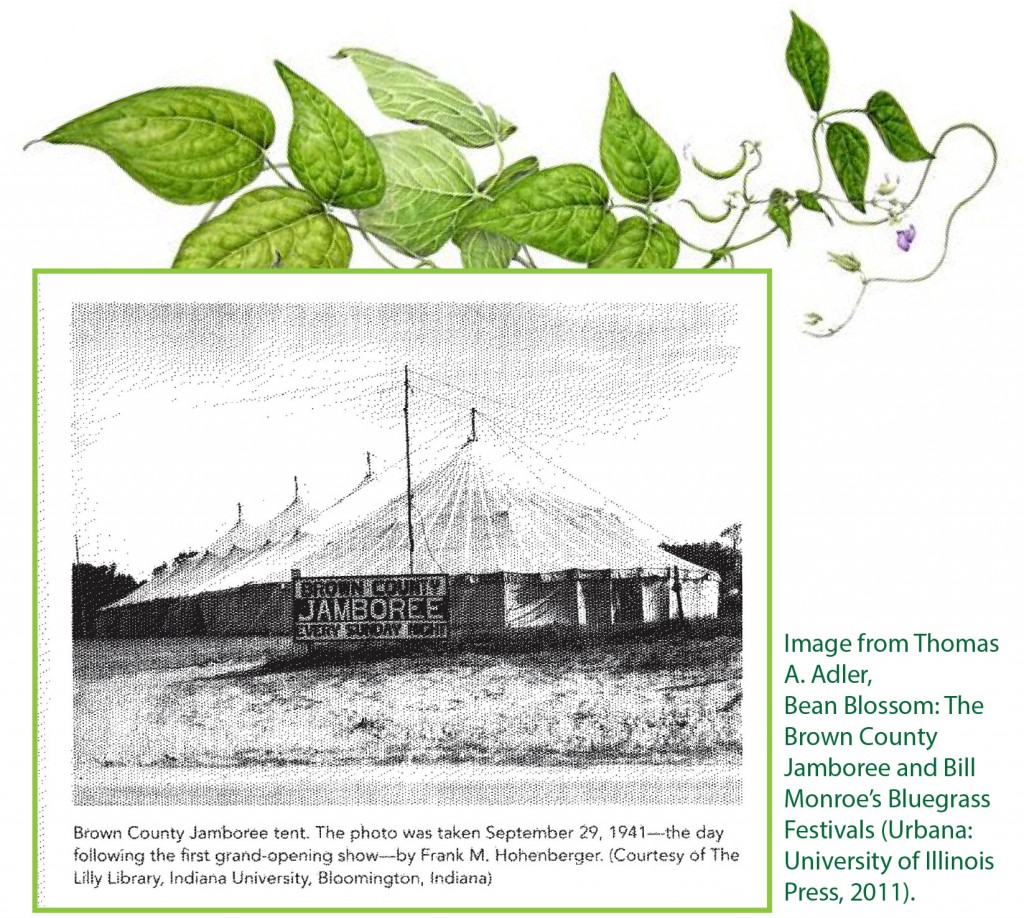 The “free” aspect of the free show didn’t last long, as the organizers couldn’t help but see how the crowd was growing. The lunchroom business was booming and there was no reason the promoters and performers shouldn’t make a little money too. They built a small stage, fenced in the area, and started to charge twenty five cents per show. Soon, they put up a tent as can be seen in the only known photograph of the Jamboree from this period.
The “free” aspect of the free show didn’t last long, as the organizers couldn’t help but see how the crowd was growing. The lunchroom business was booming and there was no reason the promoters and performers shouldn’t make a little money too. They built a small stage, fenced in the area, and started to charge twenty five cents per show. Soon, they put up a tent as can be seen in the only known photograph of the Jamboree from this period.
The admission fee didn’t dissuade the crowds. The Brown County Democrat reported August 18, 1941, “Large crowds have been attracted to the place and each evening the performance has been staged the crowds have been becoming larger. Attendance was estimated at over 4,000 for last Sunday night.” The Indianapolis Star covered the boom in attendance at the Jamboree as well, even noting that the State Police had to get involved with traffic control. Lester C. Nagley, reporting for the Indianapolis Star August 10, 1941, wrote:
Thousands of furrriners who have been touring Hoosierdom on their vacations and have been visiting Brown county’s hills are writing postcards to send back-home, telling their acquaintances about this rustic program of Sunday evening recitals of Brown County Music . . . Well, the fiddling and the ballad singing has gone over big for the last six weeks and traffic jams at this crossroads village in the Bean Blossom valley from sundown to almost midnight have required special duty by state police. Cars bearing many foreign tags . . . are thronging the village. Parking space is becoming a problem too.
In addition to drawing large crowds, the Jamboree drew the attention of radio stations. According to the Brown County Democrat in August 1941:
Brown County talent may soon be heard over the air, and believe it or not it will be broadcast from Beanblossom, according to Dan Williams, proprietor of the lunch room at the south edge of Beanblossom. Mr Williams states that representatives of Indianapolis broadcasting stations have been to Beanblossom several times in efforts to make satisfactory working arrangements to broadcast the programs which are being held there each Sunday night.
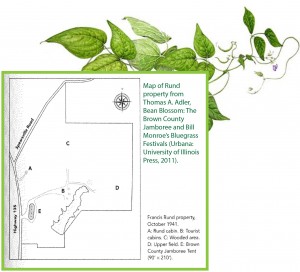 Just before the Jamboree launched, locals Francis and Mae Rund had been making improvements to their nearby property and building cabins with some sort of tourism-related business in mind as early as August 1940. By the summer of 1941, as the large crowds coming to the Jamboree were causing traffic and parking problems and more seating was needed at the outdoor venue, the Runds saw an opportunity to construct a permanent building (as opposed to a tent) so the programs could continue be held in the winter. Construction began in October. The barn-like building was funded by residents and was to seat 2,500 attendees. On October 23, 1941, the Brown County Democrat reported:
Just before the Jamboree launched, locals Francis and Mae Rund had been making improvements to their nearby property and building cabins with some sort of tourism-related business in mind as early as August 1940. By the summer of 1941, as the large crowds coming to the Jamboree were causing traffic and parking problems and more seating was needed at the outdoor venue, the Runds saw an opportunity to construct a permanent building (as opposed to a tent) so the programs could continue be held in the winter. Construction began in October. The barn-like building was funded by residents and was to seat 2,500 attendees. On October 23, 1941, the Brown County Democrat reported:
Plans for a large permanent building to be used for the Brown County Jamboree in Beanblossom to replace the tent which is now being used have been completed. . . It is to be located on the land owned by Francis Rund just north of Beanblossom where the tent which houses the jamboree now stands.
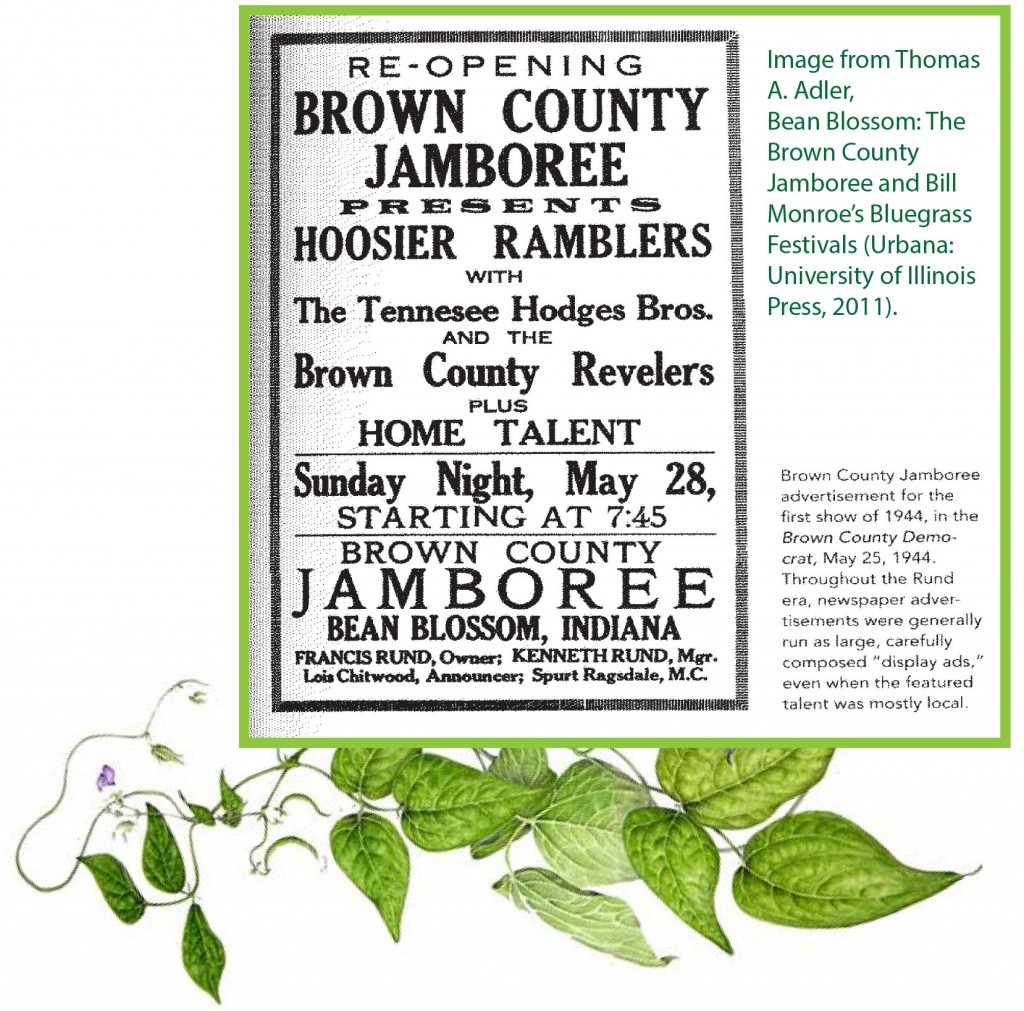 The shows during the Rund decade (1941-51) generally featured a variety show format hosted by an emcee which included comedic performers as well as music. However, the country and “hillbilly” music was always the main draw. Adler writes, “Brown County Jamboree shows were professional, fast paced, and entertaining. From the beginning, the music, comedy, and ambience of the site combined to present a nostalgic and entertaining whole.” The Indianapolis Star on August 10, 1941 described the Jamboree as “a co-operative program providing real, homespun talent, rail-fence variety of music and frivolity . . . old fiddlers and rural crooners, who would sing and warble Brown county ballads brought over the mountains by their pioneer ancestors.” The Indianapolis Times noted October 10, 1941 that in addition to “singing and dancing” the Jamboree included “vaudeville skits.” The Runds ran large advertisements for the Jamboree in the local newspaper and partnered with nearby radio stations, notably WIRE and WFBM, Indianapolis. On October 23, 1941, the Brown County Democrat reported that the Indianapolis radio station WIRE referenced the Jamboree many times during its programs.
The shows during the Rund decade (1941-51) generally featured a variety show format hosted by an emcee which included comedic performers as well as music. However, the country and “hillbilly” music was always the main draw. Adler writes, “Brown County Jamboree shows were professional, fast paced, and entertaining. From the beginning, the music, comedy, and ambience of the site combined to present a nostalgic and entertaining whole.” The Indianapolis Star on August 10, 1941 described the Jamboree as “a co-operative program providing real, homespun talent, rail-fence variety of music and frivolity . . . old fiddlers and rural crooners, who would sing and warble Brown county ballads brought over the mountains by their pioneer ancestors.” The Indianapolis Times noted October 10, 1941 that in addition to “singing and dancing” the Jamboree included “vaudeville skits.” The Runds ran large advertisements for the Jamboree in the local newspaper and partnered with nearby radio stations, notably WIRE and WFBM, Indianapolis. On October 23, 1941, the Brown County Democrat reported that the Indianapolis radio station WIRE referenced the Jamboree many times during its programs.
Even gas rationing during World War II couldn’t keep the attendees away. One participant joked that the limited gasoline only kept people from leaving Bean Blossom. Adler explained, “Rationing took effect locally in late 1942, but audiences never abandoned the Jamboree. Weekly attendees from inside the county sustained the show through the war and the following years; that pattern remained unchanged until late-1960s bluegrass festivals began to draw national and international fans.” According to Adler, however, the advertising and perhaps the Rund’s interest waned by 1951. The Jamboree needed a new owner and would soon find it in Bill Monroe, one of the biggest country music stars of all time, and the “Father of Bluegrass.”
Part Two: Bill Monroe in Indiana: From Lake to Brown County, Oil to Bluegrass
Purchase Thomas Adler’s Bean Blossom: The Brown County Jamboree and Bill Monroe’s Bluegrass Festivals in the IHB Book Shop.
